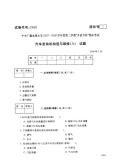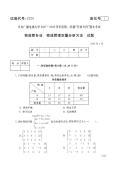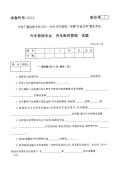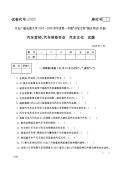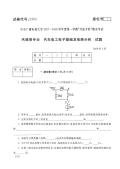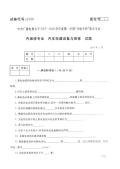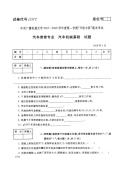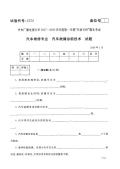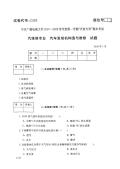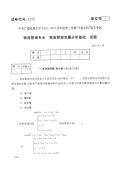国家开放大学:2007—2008学年第二学期“开放专科”汽车维修专业汽车发动机构造与维修(A)期末试题(7月)
文件格式: PDF大小: 245.25KB页数: 8
国家开放大学:2007—2008学年第一学期“开放专科”物流管理专业物流管理定量分析方法期末试题(1月)
文件格式: PDF大小: 196.5KB页数: 7
国家开放大学:2007—2008学年第一学期“开放专科”汽车营销专业汽车配件营销期末试题(1月)
文件格式: PDF大小: 249.52KB页数: 6
国家开放大学:2007—2008学年第一学期“开放专科”汽车营销专业汽车文化期末试题(开卷)
文件格式: PDF大小: 297.69KB页数: 7
国家开放大学:2007—2008学年第一学期“开放专科”汽车维修专业汽车电工电子基础及电路分析期末试题(1月)
文件格式: PDF大小: 132.95KB页数: 5
国家开放大学:2007—2008学年第一学期“开放专科”汽车维修专业汽车电器设备与维修期末试题(1月)
文件格式: PDF大小: 281.47KB页数: 7
国家开放大学:2007—2008学年第一学期“开放专科”汽车维修专业汽车机械基础期末试题(1月)
文件格式: PDF大小: 261.34KB页数: 8
国家开放大学:2007—2008学年第一学期“开放专科”汽车维修专业汽车故障诊断技术期末试题(1月)
文件格式: PDF大小: 190.63KB页数: 5
国家开放大学:2007—2008学年第一学期“开放专科”汽车维修专业汽车发动机构造与维修期末试题(1月)
文件格式: PDF大小: 256.94KB页数: 7
国家开放大学:2006—2007学年第二学期“开放专科”物流管理专业物流管理定量分析基础期末试题(7月)
文件格式: PDF大小: 186.88KB页数: 7

